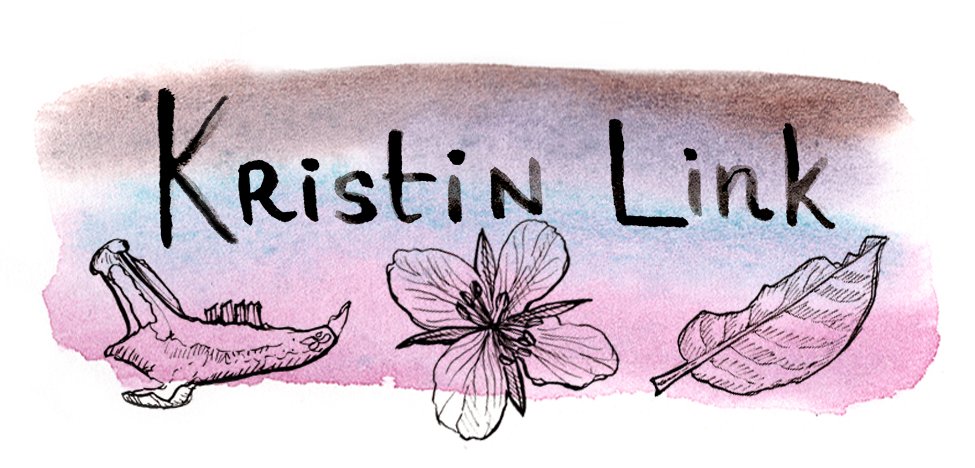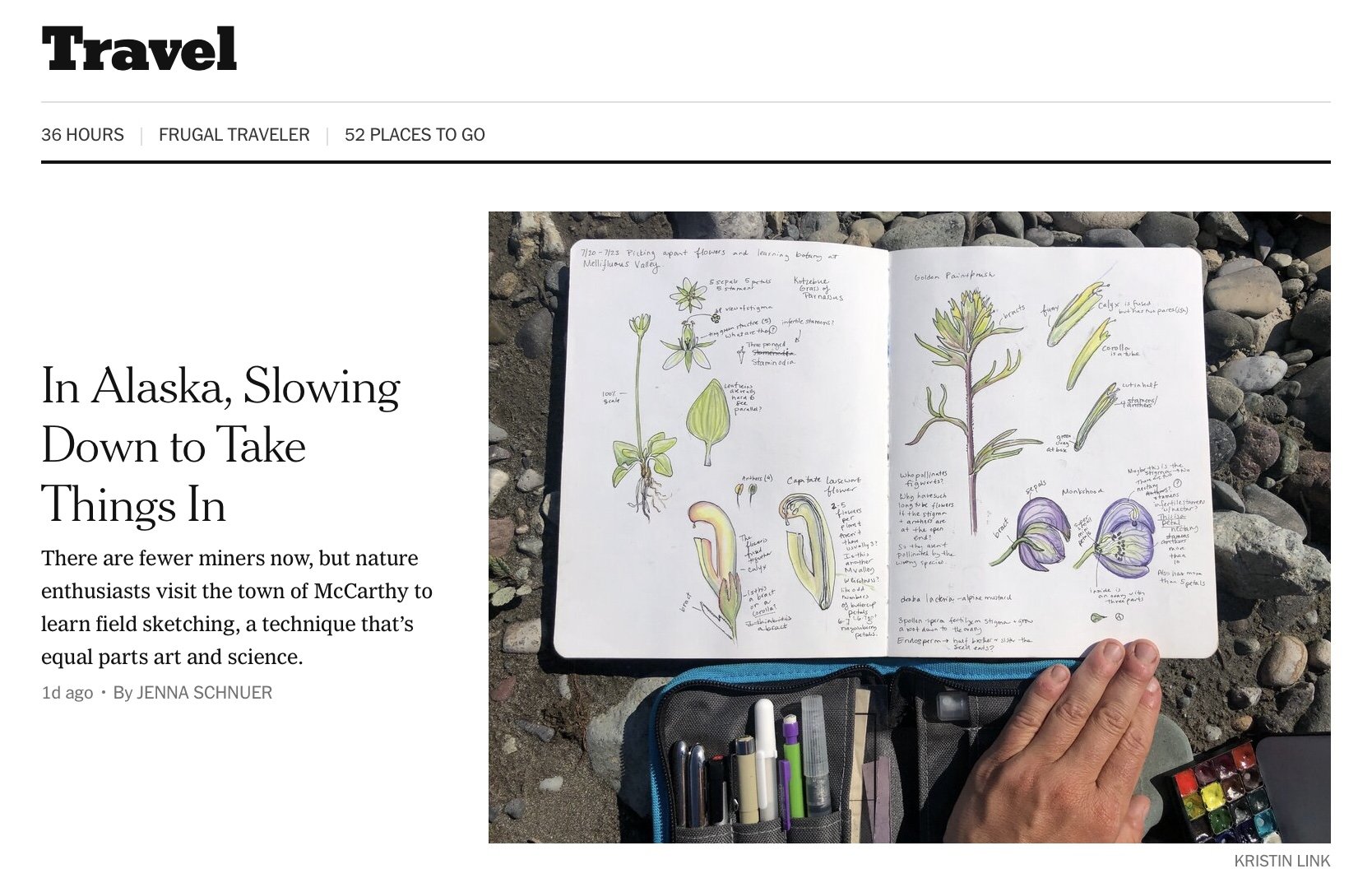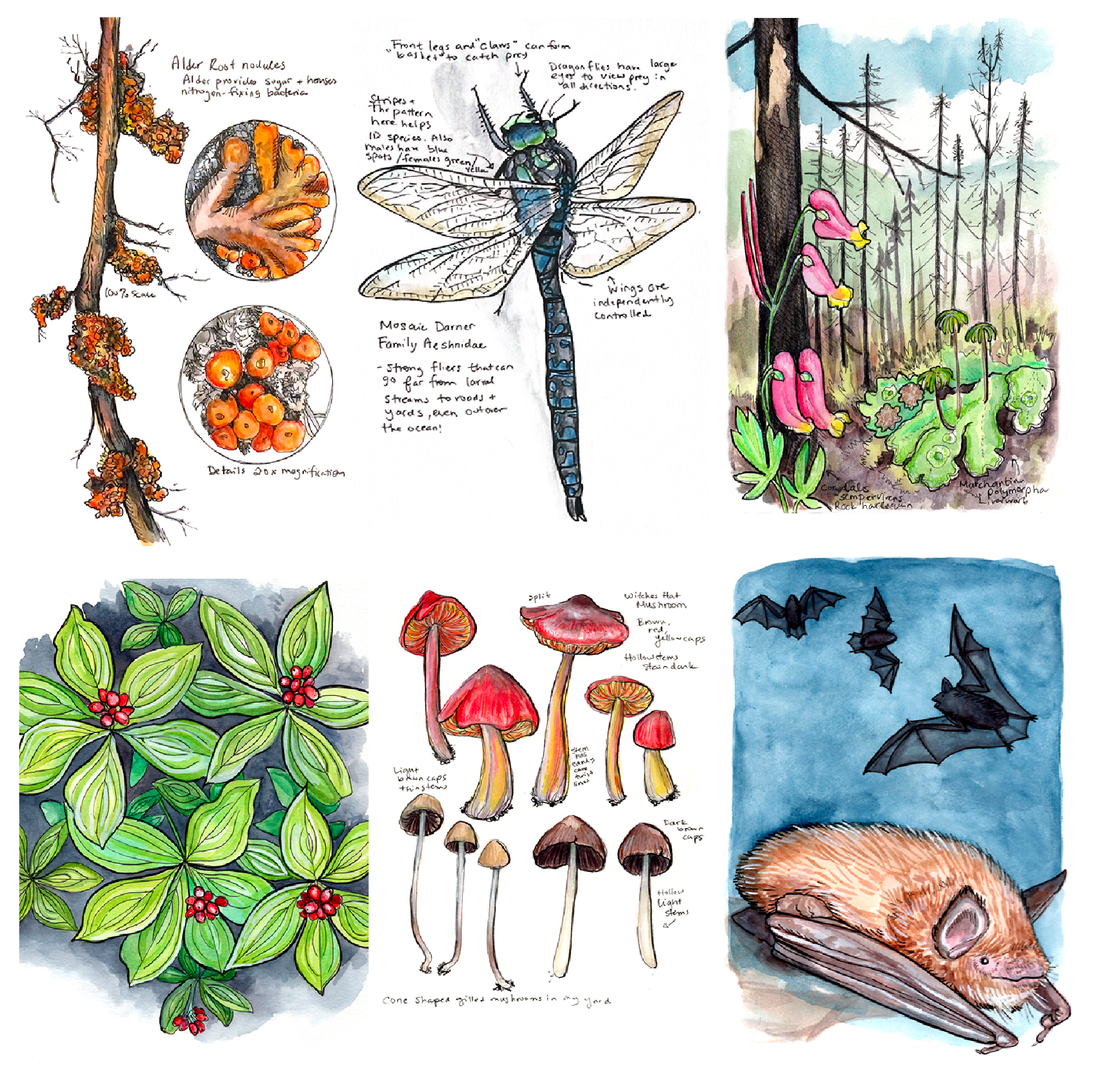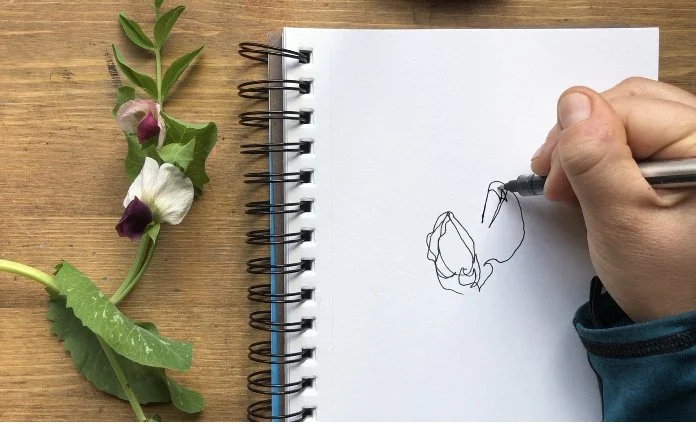Jenna Schnuer recently published (09/24/22) an article for New York Times Travel, “In Alaska, Slowing Down to Take Things In”, about taking a field sketching workshop with me at the Wrangell Mountains Center in July. It is an honor to have this topic shared with such a wide audience and I appreciate how Jenna wrote from the perspective of someone who is new to drawing and looking to slow down and to appreciate place. If you find yourself here because you read this article and are excited about beginning a sketching practice, I wrote this blog post for you.
I want to begin by saying that field sketching and nature journaling* can be done anywhere and with any materials. The article writes about visiting the remote town of McCarthy, which is in the middle of a national park (and where I happen to live) and about sketching for travel, but sketching can also be practiced in a city park, with the produce in your fridge, or looking out a window at the sky. It is a great tool for travel (including traveling around your neighborhood or your backyard) because it gets us to slow down and be present in a place for longer than we would if we took a quick photo and moved on. I love how I’ll overhear an unexpected conversation, notice different bird calls, and feel subtle changes in the environment around me while I sketch. This magic can happen anywhere.
Materials are personal and I recommend playing around with what works for you. I like to use watercolors, pen, and pencil because those are the materials that I find most portable, expressive, and capture the information I want to put on the page. I use a case and watercolor pallet from Art Toolkit because it is portable, compact, and easy for me to find what I am looking for. I brought this kit on a three week backpacking trip in the summer of 2021 and never regretted it. Start with materials that are affordable to you, with something that you feel curious about, inspired to use, and comfortable carrying around and holding in your hand. Watercolor pencils are great. Colored pencils are great. A pen or a pencil or a handful of markers. There is no right or wrong way to do this.
Where to begin? In the article Jenna wrote that one of the first things we did together as a class were blind contour drawings. When I did my graduate program in science illustration blind contour drawings were one of the first exercises we did there. They are a feature of many intro to drawing classes and for good reason, they teach us to observe, to draw what we see instead of what we think we see.
Four minute demonstration on blind contour drawing
How to do a blind contour drawing: Find a subject to draw (an interesting natural object, your other hand, or your face in the mirror or someone else). Put your pencil or pen on paper and draw one continuous line to describe the form or contours of your subject. Don’t stop drawing (go slowly) and don’t pick your pencil off the paper. Also don’t look at your drawing. Look at the subject and think about describing the shape with a line. Bethan Burton says to think of the tip of your pencil as an ant walking across the surface. I like to try and set a timer to get myself to slow down and spend some time on this. If you pencil lead breaks or you fall off the edge of the paper, that’s OK, just start again where you stopped. This is a warm up exercise about developing hand eye coordination and observation skills. It is not about pretty pictures or even about recognizable pictures. My blind contour drawings usually look like piles of spaghetti, but when I look at them closely I see moments of truth and passages of carefully observed shapes.
If this is helpful and you’re interested in more short lessons like this on getting started with sketching, please let me know.
I’ve also received a number of questions about my teaching schedule: when am I teaching my next workshop? Do I teach online? I will probably teach some workshops in person next summer. I’ll put information about my future workshops in my newsletter and on social media. I’ve thought about putting together an online class so that may happen in early 2024.
There are a lot of amazing teachers and ways to get involved. I highly recommend finding a nature journaling community in your area. There is also a lot happening online. Since I live in Alaska the Boreal Nature Journal club has been a great community for me. There is also a bigger Nature Journal Club Facebook page. The Wild Wonder Nature Journaling Conference is also an annual online conference that happened September 14-18, but to which you can get an online pass. If you are getting started I highly recommend these classes:
Simply Birds taught by Melinda Nakagawa: Good intro to sketching techniques working with birds
Getting Started Nature Journaling taught by Marley Peifer: Mindset and questions and prompts to get you started
Using Simple Lines to Capture Our World taught by Bethan Burton: Practice different drawing techniques
*Field Sketching vs. Nature Journaling: I use these two phrases pretty much synonymously. I often teach “field sketching” because I work as a visual artist and focus my instruction on drawing and painting from observation. I also include nature journaling in my practice and teaching. Nature Journalers are a community started by John Muir Laws that include sketching, but also expands the way we observe the natural world combining words, pictures, and numbers with the prompts: I notice, I wonder, and It reminds me of. The nature journaling community is amazing, full of resources, and growing exponentially :)



